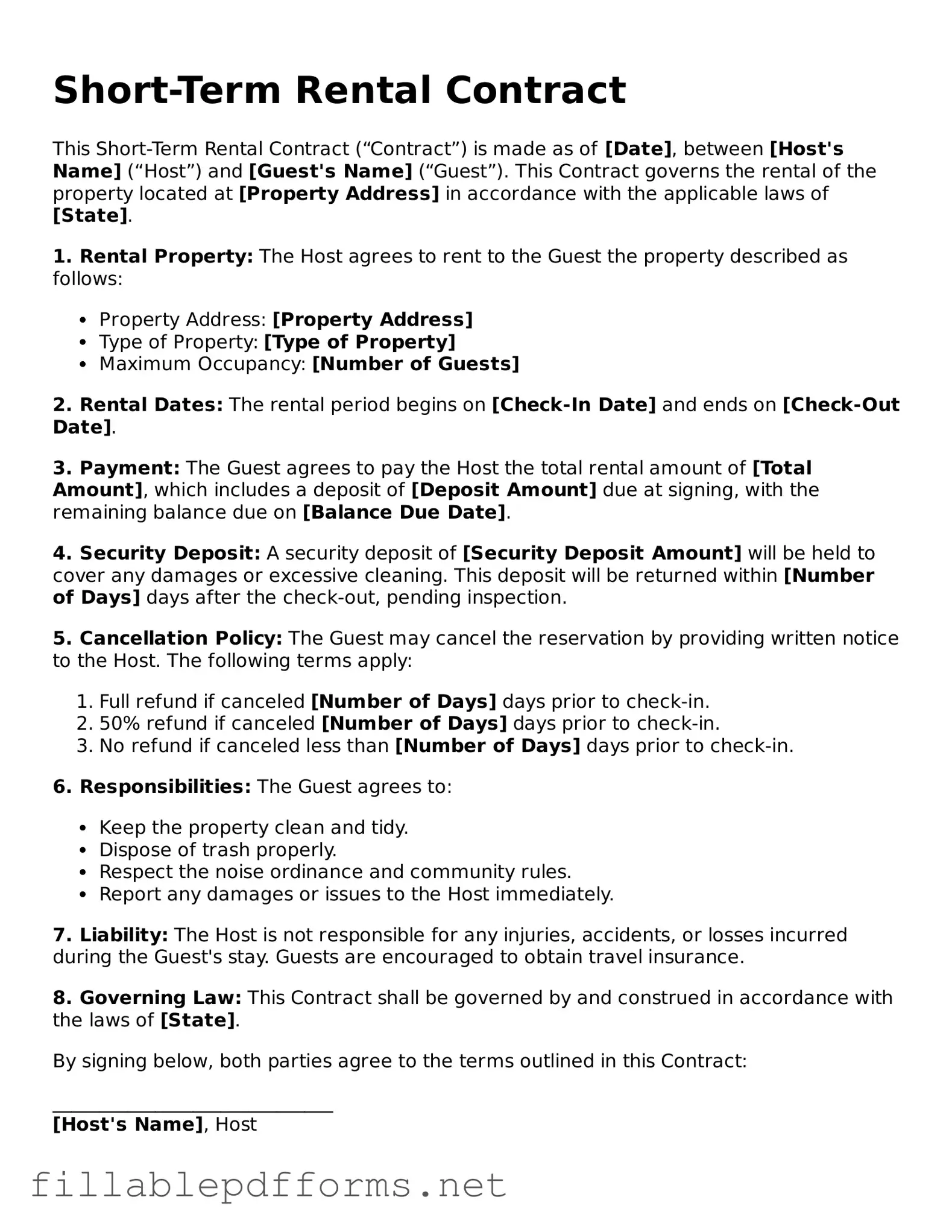Blank Short-Term Rental Contract Template
The Short-Term Rental Contract is a legal agreement that outlines the terms and conditions for renting a property for a brief period, typically less than a month. This contract serves to protect both the property owner and the renter by clarifying expectations and responsibilities. Understanding this form is essential for ensuring a smooth rental experience.
Launch Editor Here
